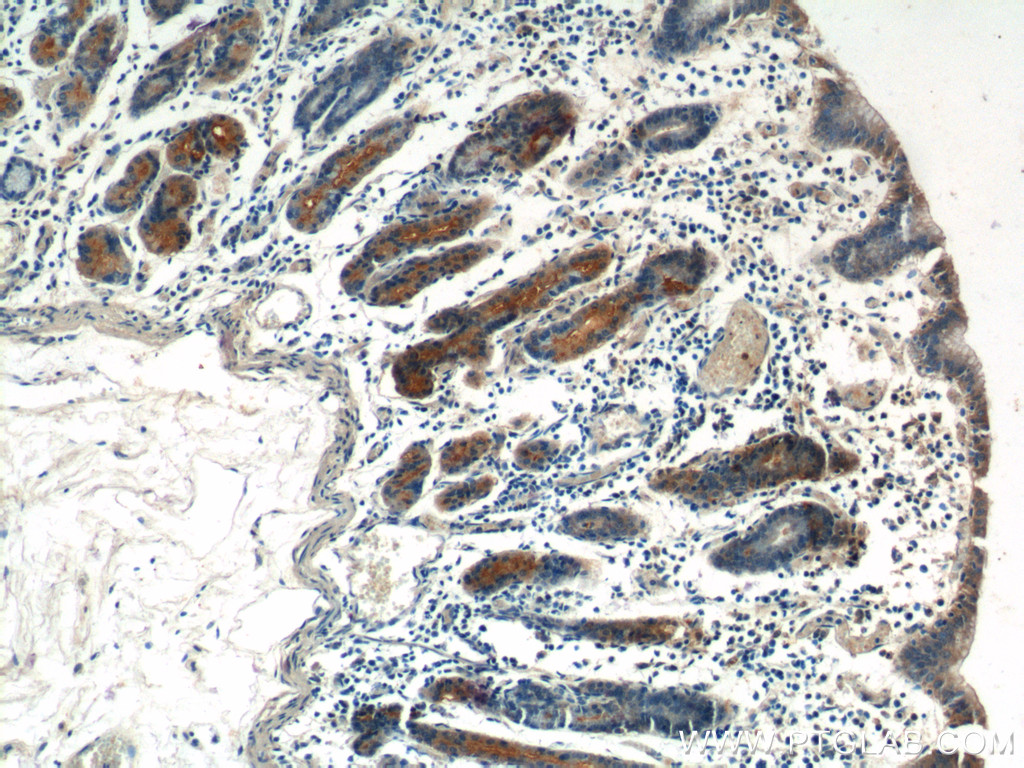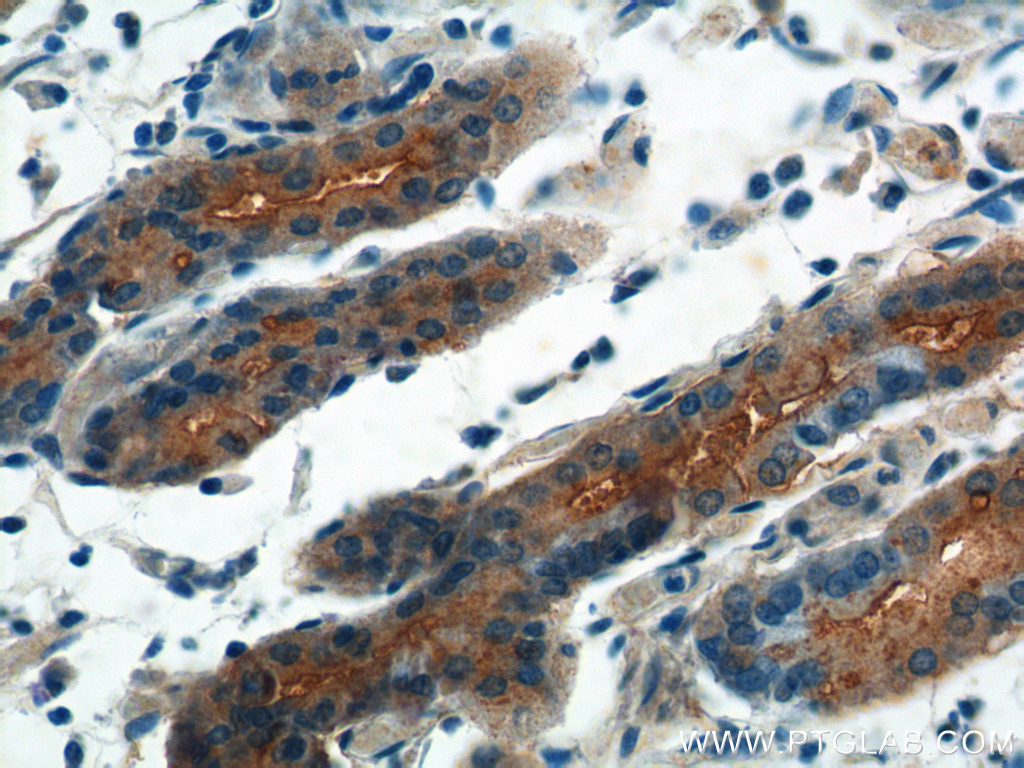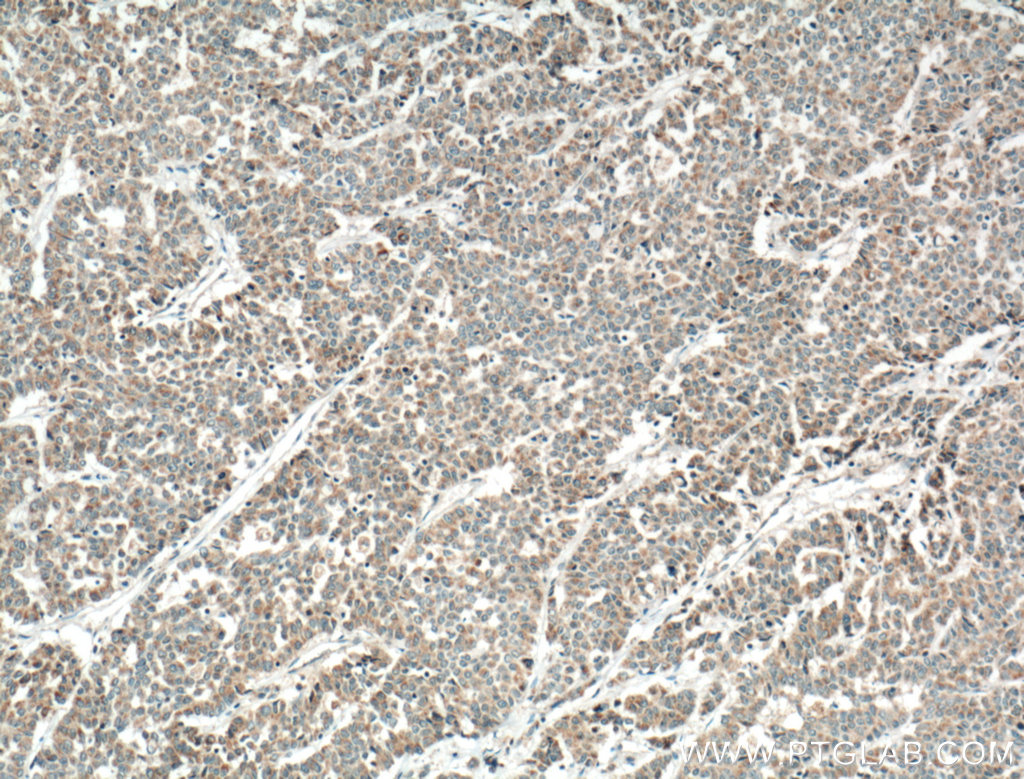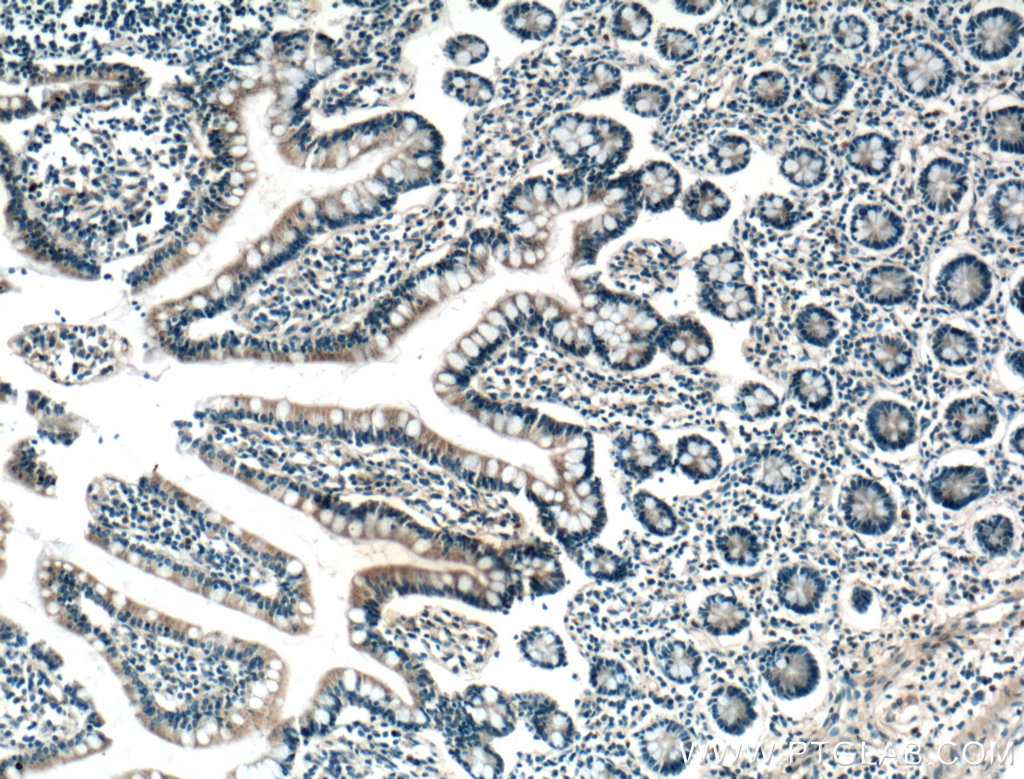验证数据展示
经过测试的应用
| Positive IHC detected in | human stomach tissue, human prostate cancer tissue, human colon cancer tissue, human small intestine tissue Note: suggested antigen retrieval with TE buffer pH 9.0; (*) Alternatively, antigen retrieval may be performed with citrate buffer pH 6.0 |
| Positive IF/ICC detected in | MCF-7 cells |
推荐稀释比
| 应用 | 推荐稀释比 |
|---|---|
| Immunohistochemistry (IHC) | IHC : 1:50-1:500 |
| Immunofluorescence (IF)/ICC | IF/ICC : 1:50-1:500 |
| It is recommended that this reagent should be titrated in each testing system to obtain optimal results. | |
| Sample-dependent, Check data in validation data gallery. | |
产品信息
26554-1-AP targets FGF9 in IHC, IF/ICC, ELISA applications and shows reactivity with human samples.
| 经测试应用 | IHC, IF/ICC, ELISA Application Description |
| 经测试反应性 | human |
| 免疫原 | FGF9 fusion protein Ag24244 种属同源性预测 |
| 宿主/亚型 | Rabbit / IgG |
| 抗体类别 | Polyclonal |
| 产品类型 | Antibody |
| 全称 | fibroblast growth factor 9 (glia-activating factor) |
| 别名 | FGF-9, FGF 9, Heparin-binding growth factor 9, HBGF-9, Glia-activating factor |
| 计算分子量 | 208 aa, 23 kDa |
| GenBank蛋白编号 | BC069692 |
| 基因名称 | FGF9 |
| Gene ID (NCBI) | 2254 |
| RRID | AB_2880550 |
| 偶联类型 | Unconjugated |
| 形式 | Liquid |
| 纯化方式 | Antigen affinity purification |
| UNIPROT ID | P31371 |
| 储存缓冲液 | PBS with 0.02% sodium azide and 50% glycerol , pH 7.3 |
| 储存条件 | Store at -20°C. Stable for one year after shipment. Aliquoting is unnecessary for -20oC storage. |
背景介绍
Fibroblast growth factor 9 (FGF9) is a critically important and elegantly regulated growth factor that was first identified during a screen for factors acting on cells of the central nervous system (CNS). Over the subsequent two decades of research, FGF9 has been revealed to play a significant role in various biological processes. A key feature of its control is reciprocal compartmentalization, particularly during development, with the epithelium serving as a dominant source and mesenchyme as a prime target. This mesenchyme selectivity is achieved through the high affinity of FGF9 to the IIIc isoforms of FGFR1, 2, and 3. FGF9 is widely expressed in the embryo, including in the developing heart and lungs, and more selectively in adult tissues, such as the CNS and kidneys.
实验方案
| Product Specific Protocols | |
|---|---|
| IHC protocol for FGF9 antibody 26554-1-AP | Download protocol |
| IF protocol for FGF9 antibody 26554-1-AP | Download protocol |
| Standard Protocols | |
|---|---|
| Click here to view our Standard Protocols |








